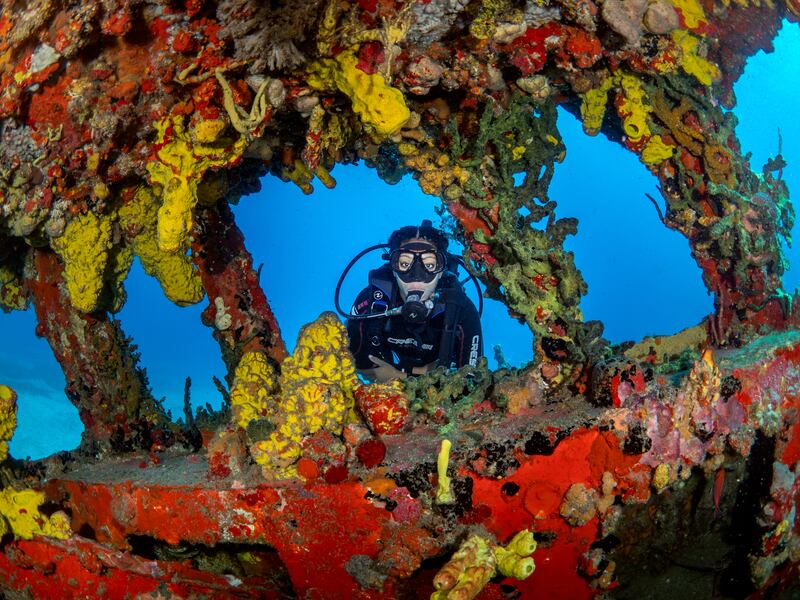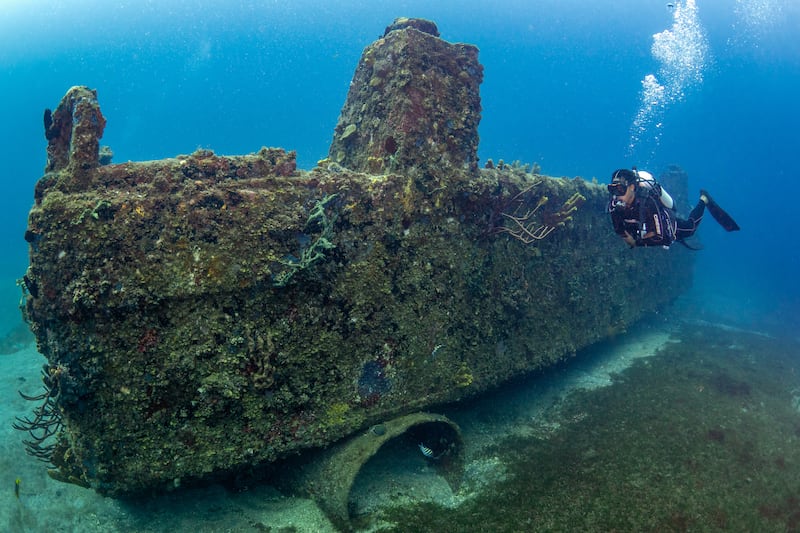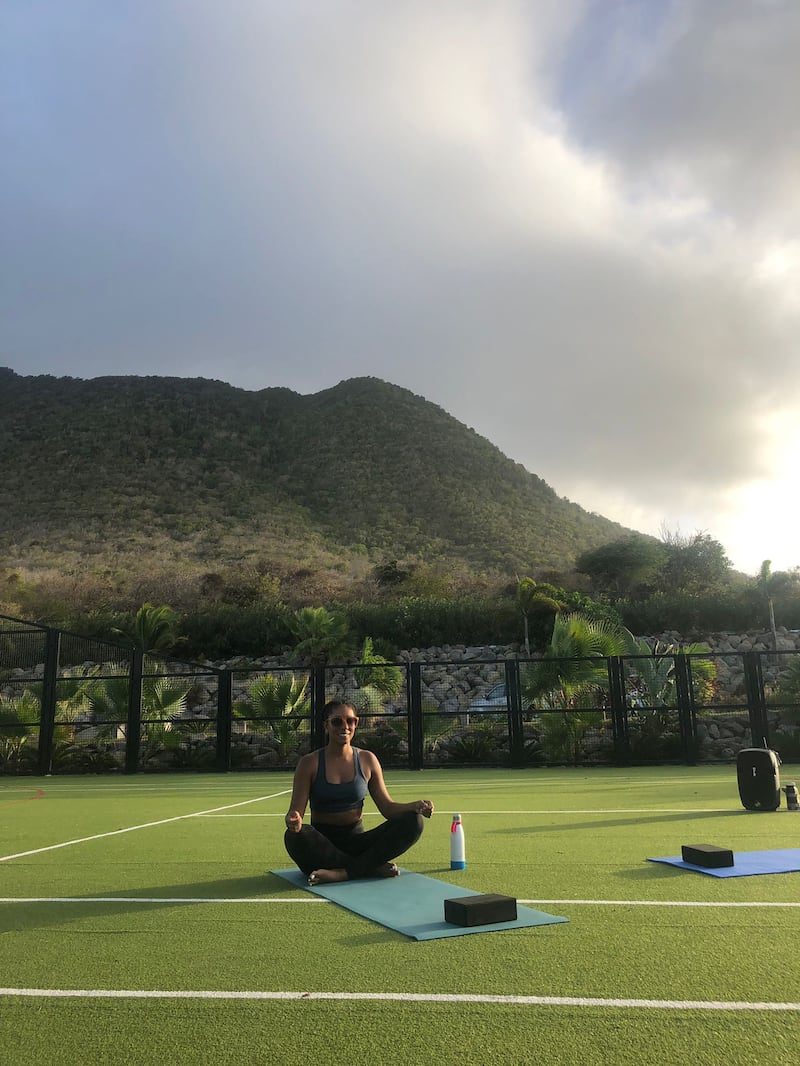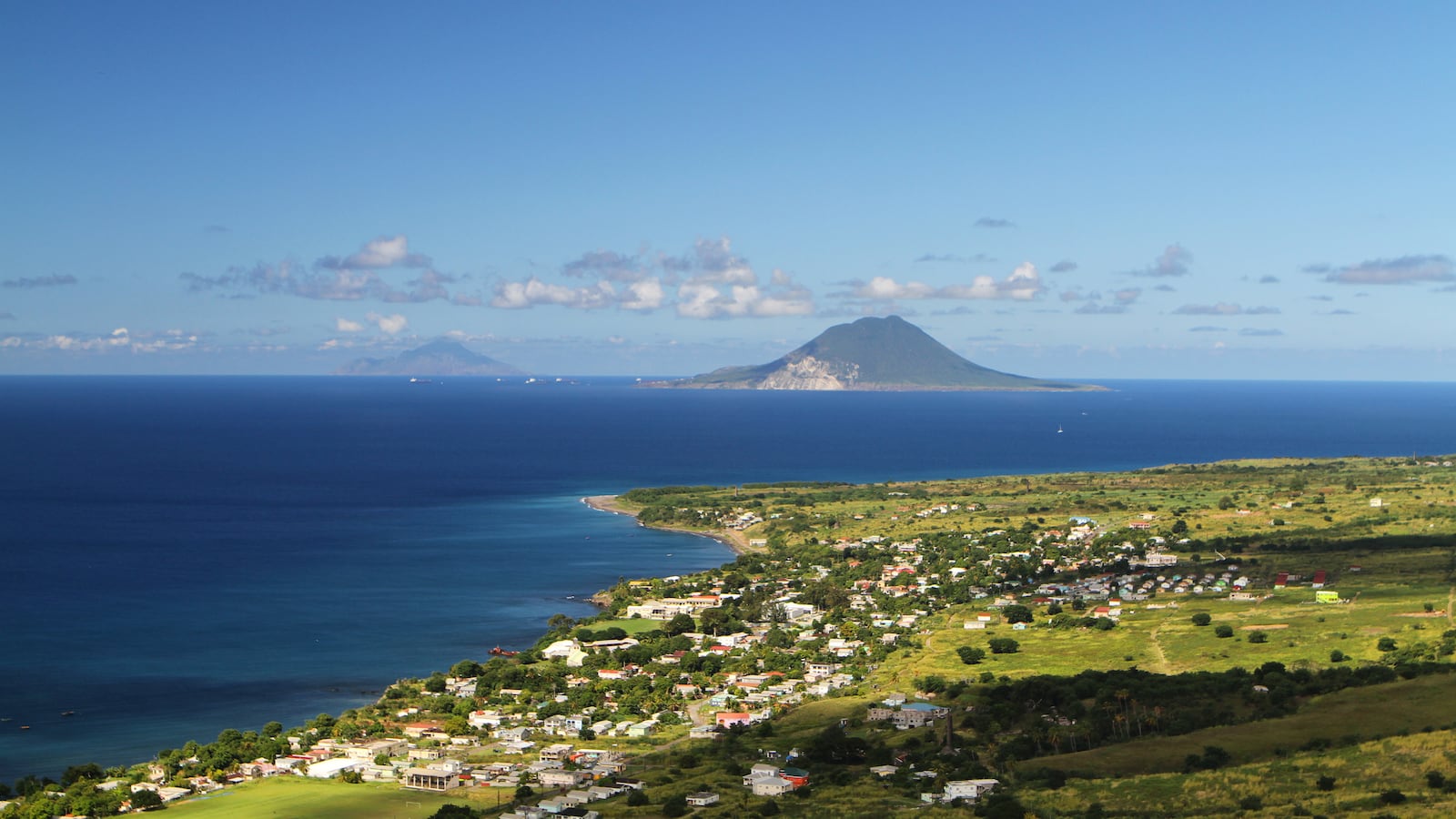Excitement runs through me as I take in the blissfully short lines gathered at St. Maarten airport with signs reading “transfer to St. Eustatius.” The line bore just a few patiently waiting locals and a handful of tourists with backpacks stuffed with long, diving fins: I knew that I was heading to a little-known mecca ripe for adventure and underwater enthusiasts. After boarding a 20-seater plane for a quick, 20-minute flight over sparkling blue waters, I landed on the tiny island (also known by locals as “Statia”). Immediately, you could see in the distance the imposing landmark of the destination: the Quill, a dormant volcano replete with healthy rainforests, hiking trails, and abundant plants and fruit that local herbalists source for their cuisine.
Most people I spoke with before my trip had never heard of the off-the-map island, however the history of the destination is significant both globally and in U.S. history. After being colonized in 1493, St. Eustatius changed hands between European empires around 22 times before remaining Dutch territory. Despite being a tiny island off the tourist path, the capital of Oranjestad was actually the most important stop in the 1700s for the distribution of goods and slaves due to the fact that the port required no customs duties. This monetary boon gave the small island the nickname: “Golden Rock.” St Eustatius was also the first country to recognize the U.S. as being an independent nation during the American War of Independence in 1776 when cannons were ceremoniously fired to salute an American merchant ship visiting the island.

So, what brought me to St. Eustatius? The diving, of course. The St. Eustatius National Marine Park as well as other dive sites in the destination are arguably some of the best in the Caribbean, where you can get up close and personal with everything from colorful reefs, lava flows, boulder slides, rock outcroppings, and shipwrecks that have found their final resting place either by accident or intentional means.
My underwater exploration would be led by PADI-certified instructors at Scubaqua, a local dive shop in the Lowertown harbor area housed in the historic Dutch West India Company headquarters.
After arriving, I wait for the other divers on the adjacent black sand beach and take in the beauty of these sparkling black minerals deposited over hundreds of years by the five volcanoes on the island. Our instructor tells us we were going to pay an underwater visit to a Taiwanese fishing vessel called the Chien Tong which sank in 2004, believed to have met its fate because of a tipsy captain. During the 80-foot-deep dive, I swam through the small, coral crusted doors of the vessel and took in a variety of marine life like Bearded Fireworms, Southern Stingrays, Bar Jacks, and Horse-eye Jacks.

Our second dive of the day was to the STENAPA (St Eustatius National Marine Park) Reef which has a maximum depth of 60 feet. This man-made reef- a combination of items like a tugboat, pieces of broken shipwrecks, and long metal pipes- was created to attract marine life since local fishermen are prohibited from fishing in the southern and northern marine reserve. I enjoyed seeing the organisms that were indeed attracted to the area: a medley of barracuda, sponges, French Angelfish, and Caribbean reef sharks.
On the second day, we visited “Hangover Reef”: so called because of its abundance of coral overhangs, shelves, and tunnels that you can swim over and under. The reef appeared colorful and healthy despite some algae growth. The final dive at “Anchor Point” reef was perhaps the most interesting in terms of geology. The reef was formed from volcano flow which created a large coral overhang and crack that you can now swim through. Apparently, a French sailor many years ago sunk his anchor into the softened lava and could not retrieve it. There are other historical points of interest on the island to explore by land. For example, Fort de Windt has 18th century cannons on display in an open air museum-like setting with the island of St. Kitts visible in the distance.

Checking in to luxurious accommodations is a welcome end to a day of adventure. The 40-acre Golden Rock Resort provided sweeping views of the Atlantic Ocean from my room as well as of the beautiful gardens and eye-to-detail landscaping. My first night, after having an outdoor solo yoga session on the grounds, I retreated to my room for a soak in the freestanding tub. Also, on property included a sizable swimming pool as well as an oceanfront gym where my muscles melted during a spa treatment in one of the tranquil treatment rooms. Perhaps the most standout part of the resort is the cuisine where you can order locally caught Mahi Mahi, snapper, grouper, tuna, and lobster at the on-site restaurant, Breeze. Depending on the length of your trip, you can also sample local goat during their international curry themed night.
Although the Statia waters teeming with marine life make it a must for aquatic adventures, exploring the land gives an insightful perspective of the history and flora of the island. The dormant volcano, The Quill, offers 8 trails that weave throughout the thorny woodland and elfin forest. I recommend first timers explore with a guide. My experience hiking with a local, Celford Gibbs (who offers tours for $35-$50 depending on the size of the group) gave me a snapshot in time describing the history of slavery on the island as well as his decades of knowledge on the indigenous plant life. He uses many of these local plants and fruit for his local product Celebees company: neem oil for hair; natural soaps; as well as tamarind wine. Request the 2-hour round trip hike to Mazinga Peak: the highest point on St. Eustatius. This 360-degree view of the surrounding islands of St. Kitts, Nevis and Montserrat serve as inspiration for the next Caribbean adventure.






